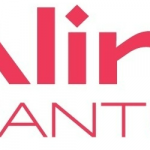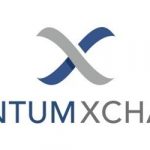Quantum News Briefs October 27: Alice & Bob expands to North America with new Boston office; QuEra & QMware collaborate to power hybrid quantum computing applications in Europe; IBM Blog: You need 100 qubits to accelerate discovery with quantum + MORE

Quantum News Briefs October 27:
Alice & Bob expands to North America with new Boston office

Alice & Bob, a leading hardware developer in the race to fault-tolerant quantum computing, today announced the opening of a new office in Boston to lead the company’s North American business development and accelerate its technology advancements for the quantum-ready market. Quantum News Briefs summarizes.
The Boston headquarters will be led by Blaise Vignon, Chief Product Officer of Alice & Bob, who will assume the role of President of Alice & Bob USA. Alice & Bob recognized the need to establish a strong executive presence encouraged by the solid market demand for quantum services from various U.S. industries. Blaise’s depth of technical and business expertise will be essential for the company to capitalize on Boston’s large talent pool from top universities and flourishing R&D ecosystem.
Alice & Bob is solely focused on the race to logical qubits that can create major impacts for businesses in the fault tolerant quantum computing era. Their logical cat qubit architecture could be available as soon as 2024.
Blaise has previously held leadership positions in product management at Microsoft and Criteo. At Microsoft France, he led the Business Development effort from Microsoft towards the local startup ecosystem. Blaise also served in an engineering capacity designing GPUs at NVIDIA. Blaise will lead the office alongside a product team poised to execute Alice & Bob’s full commercial and technological vision in North America.
The Boston headquarters will be opened at the heart of Cambridge academic and commercial landscape at 1 Broadway Building, Cambridge, Mass. The area is renowned for its academic prowess, booming health tech scene, and rich history in finance and biotechnology, leading to its establishment as a burgeoning quantum hub. Click here to read the announcement in-entirety.
QuEra & QMware collaborate to power hybrid quantum computing applications in Europe
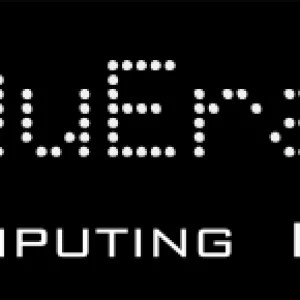
QuEra Computing and QMware AG unveiled their collaboration to power early use cases in hybrid quantum computing on October 26. Quantum News Briefs summarizes their announcement,
The partnership will integrate QuEra’s leading quantum technology into QMware’s hybrid quantum computing cloud platform, making it accessible to a broad spectrum of European customers across research, industry, and academia.
QMware’s hybrid quantum computing cloud distinguishes itself through its distinctive quantum computing stack, seamlessly combining classical high-performance computers with virtual quantum processors. By integrating QuEra’s 256-qubit quantum computers, QMware is extending its platform’s capabilities and reinforcing its commitment to hybrid quantum computing.
QuEra’s unparalleled technology, including its 256-qubit Aquila-class machines and FPQA technology, will address a broad number of opportunities for QMware’s customers. QuEra’s integration into QMware’s platform signifies an evolution in quantum computing, offering a blend of system size, coherence, and innovative quantum processing.
“The collaboration with QMware is a strategic step to address the growing demand for top-tier quantum solutions in the European market,” said Yuval Boger, chief marketing officer, QuEra. “Our combined expertise and resources pave the way for complex computing challenges to be solved with the ideal combination of classical and quantum resources.” Click here to read announcement in-entirety.
IBM Blog: You need 100 qubits to accelerate discovery with quantum
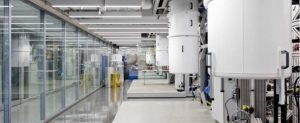 A new paper from IBM and UC Berkeley shows a useful application for 127-qubit quantum processors with error mitigation — and a path toward useful quantum computing. Quantum News Briefs summarizes an October 26 IBM Blog post.
A new paper from IBM and UC Berkeley shows a useful application for 127-qubit quantum processors with error mitigation — and a path toward useful quantum computing. Quantum News Briefs summarizes an October 26 IBM Blog post.
Teams extracted accurate results from a quantum computer for a circuit that couldn’t be exactly simulated by a classical computer. This sparked a new era in quantum computing at IBM: the era of quantum utility, where quantum computers could provide real value beyond classical for solving real-world problems. Since then, classical approximations have continued to verify the value of our experiment — but differ among each other by a significant amount. For the first time, we can use quantum as a source of truth against which we can benchmark classical approximation methods.
Now, more work is flooding in as researchers begin to do quantum at a meaningful scale. Papers from teams based at the University of Washington, Stony Brook University, IBM, and elsewhere are exploring a space beyond exact classical simulability, running circuits with over 100 qubits and hundreds‚ even thousands of gates.
Taking a step back, it’s hard to believe that we’re really here. Scientists at world-leading research institutions are using our systems not just to study quantum physics, but to advance science. Folks are writing real papers to explore uncharted scientific territory in domains beyond quantum computing. This is what we mean by the “era of utility.”
What kinds of utility-scale work are researchers doing?
–Simulating spin chains
–State preparation with a side of condensed matter physics
–Uncovering the nature of matter
What do these experiments have in common? Well, they’re using quantum computers to do real experiments at a scale beyond what’s possible with exact classical simulations. In other words, we’re starting to uncover problems for which quantum computing is the best tool for generating answers and for pushing science forward.
These are just the first papers in this new era of quantum utility.
Click here to read the complete comprehensive article on IBM’s Blog.
Australia’s Pawsey receives major boost in quantum research pursuits through NCRIS grant
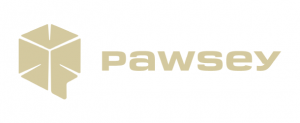 Australia’s Pawsey Supercomputing Research Centre has received a $5 million grant from the Australian Government’s National Collaborative Research Infrastructure Strategy (NCRIS) program. Quantum News Briefs summarizes the announcement.
Australia’s Pawsey Supercomputing Research Centre has received a $5 million grant from the Australian Government’s National Collaborative Research Infrastructure Strategy (NCRIS) program. Quantum News Briefs summarizes the announcement.
The new funding will enable Pawsey over a period of two years to extend its national supercomputing and quantum computing innovation hub, pilot new projects and develop quantum applications.
Pawsey’s Executive Director Mark Stickells said the grant follows Pawsey’s ongoing efforts to harness the potential of quantum for tangible, real-world applications and its integration with high-performance computers.
“We value the opportunity that this investment represents, to continue to scale and innovate Pawsey’s national quantum computing activities and work with national and international partners. This funding underscores not only Australia’s commitment to scientific progress but also faith in our ability to drive transformative change through innovation. We are excited to leverage this opportunity to amplify our efforts and push the boundaries of quantum research in the national interest,” Stickells said.
The grant builds on Pawsey’s strong foundation of earlier successful projects and collaborations, which include:
–Pioneering the onsite integration of quantum accelerators within supercomputing centres. Pawsey’s first integration, in partnership with Quantum Brilliance, is currently being used to demonstrate and test hybrid models of quantum and classical computing by pairing the in-house quantum accelerator with Pawsey’s flagship system, Setonix.
–Developing quantum education programs. One of these programs is led by quantum physicist Professor Jingbo Wang at The University of Western Australia and aims to equip university students with the skills and knowledge needed for utilising quantum technology.
–Supporting initiatives like ‘Quantum Girls’, which strives to introduce quantum science and computing into classrooms and foster STEM interest through tailored programs, including hackathons, designed to inspire young girls.
Click here to read the complete announcement.
Sandra K. Helsel, Ph.D. has been researching and reporting on frontier technologies since 1990. She has her Ph.D. from the University of Arizona.


















